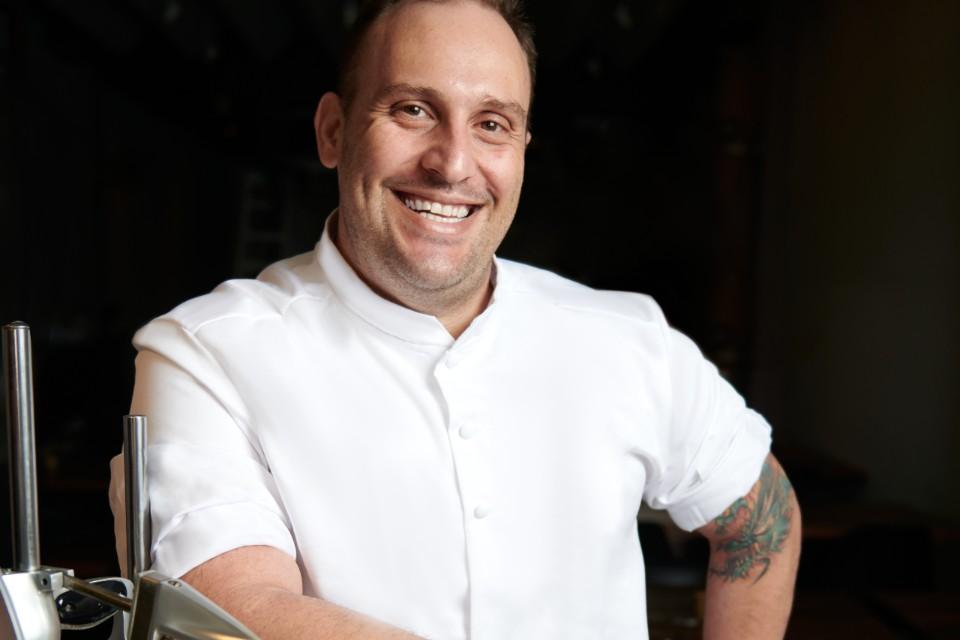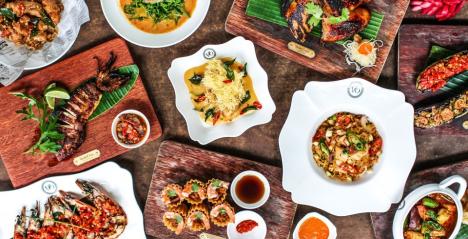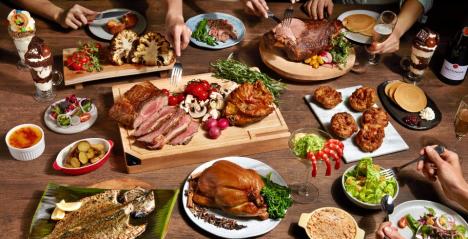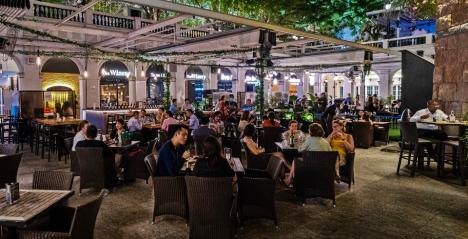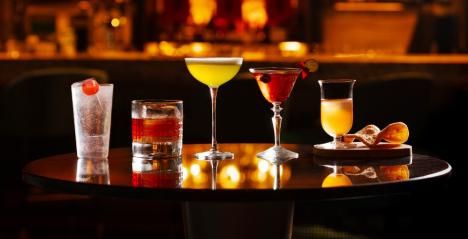On a rainy, weekday afternoon, I found myself at 12 Purvis Street, at the exclusive restaurant Salted & Hung. But the weather was the end of how dreary my afternoon was going to get, because my next hour and a half was a lovely culinary journey, full of stories and learning.
When Chef, and owner Drew Nocente started Salted & Hung, he brought together two things that mattered the world to him. One was his love for cooking, and food, and the other was his deep passion for zero waste, and sustainability, and these were the main raisons d’etre for the restaurant.
Growing up on a farm in Australia, Nocente, has a respect for what nature provides for humankind, and he brings this into his restaurant. We live in a world that is fast diminishing due to our needs and lifestyles, and it becomes increasingly important for us to make informed lifestyle choices, for example, eating at restaurants that make a conscious effort to sustain the environment.

I experienced the new 8-course meal, called The Art of Sustainability ($198++), which brings Nocente’s philosophy of minimal waste cooking to each and every item brought to the table. The restaurant has now done away with a la carte items,and instead offers elaborate set meals. The ingredients are all interconnected. For example, the delicious charcuterie set starter has an excellent selection of house cured meats: duck, pork, and beef.
In turn, the trimmings from these meats is used in the green lip abalone starter, which was a decadent mouthful, and perhaps my favourite starter. The abalone had been grilled in a butter made from the liver of the abalone, yeast extract and butter. The most special thing about this dish is that it was served with the abalone shell as a gorgeous cover. But this is not where it ends for the abalone shell, it is further utilised, in the form of your cutlery-rest, as well as the steak knives.
Another remarkable starter was the decadent caviar. In this, a cured kingfish is mixed with creme fraiche and topped with kaluga caviar. It is served with crunchy, collagen chips which have been made with a broth of radish, and pickle trimmings and the turbot fish’s skin and fins. The broth is made into a paste, dehydrated and then fried to make these crispy chips.

The star of this menu is of course, the Turbot fish (pictured above) which was an absolute delight to sample. What is even more applause-worthy is that each, and every part of the fish has been utilised to make this five star dish. The turbot filet is aged in the chiller for 5 days, rolled into a tubular shape, like a roll, and further slow-cooked for 30 minutes. The result is a soft, melt-in-the mouth flesh.
This filet is best enjoyed with the vin Jaune sauce, which is made from the fish’s bone stock, and its liver, along with other ingredients such as caramelised onions, yuzu, and parsley. But the most interesting thing I had with this meal, was an incredible Dashi tea, full of robust umami flavours.
Now, in order to make this beautiful tea, the bones of the fish are hung out to dry for two weeks. You can actually see the carcasses of the fish drying in the restaurant’s minimalistic kitchen. The dried bones are then rubbed with Koji-a type of edible mould. These bones are further aged for another 3 weeks, and then used to make a broth with fish soy, stock, and mushroom dashi. And this becomes the dashi tea, a broth savoured slowly, while you eat the fish.

The other main dish is the dry-aged, grass-fed vintage beef, which I am happy to say was not at all dry or chewy, but tender, easy-to-cut, with an almost melt-in-mouth texture. The sauce for the steak has been made with the t-bone, and beef trimmings, while the unique carrot ketchup has used the carrot skin, and trimmings, The steak knives handles were beautiful, made from recycled abalone shell, from abalones used in the restaurant itself.
The dessert plate was an absolute delight, with Nocente paying homage to his childhood, growing up on his family farm, where he remembers picking apples. It is a simple, yet delicious end to the meal, with apple pound cake and slow-cooked apple pieces sprinkled with apple pie-sugar, almost like a lovely apple pie, minus the pastry. It was served along with a tangy, apple kombucha which comes in a delightful, thimble-sized, copper mug.
But Nocente’s sustainability philosophy is not just used in the meals, it extends to all parts of his restaurant. The team sources produce from trusted vendors, and farmers from Australia, that have established good-farming practices. For example, the beef they use in Salted & Hung, is cuts from 8-year-old retired, breeding cattle. For micro-herbs, they looked locally and get them from local vendor Pocket Greens, to whom the restaurant, in turn, gives its compost, made from kitchen scraps.
In the kitchen, plastic necessities such as cling wrap, garbage bags, and disposable packaging have been done away with and have been replaced with biodegradable versions. For smoking their ingredients, coconut-husk charcoal was introduced, making use of the part of the coconut which is thrown away. Also, when you eat here, you will not find any single-use straws, and instead of a paper coasters, your drink will sit on a marble one.
The staff at Salted & Hung take great pride in telling their diners the philosophy, and the ethos of their restaurant, while serving you the delightful food. I cannot wait to see what the restaurant will do next.
a. 12 Purvis Street, Singapore 188591
s. www.facebook.com/SaltedandHung
t. +65 6358 3130

